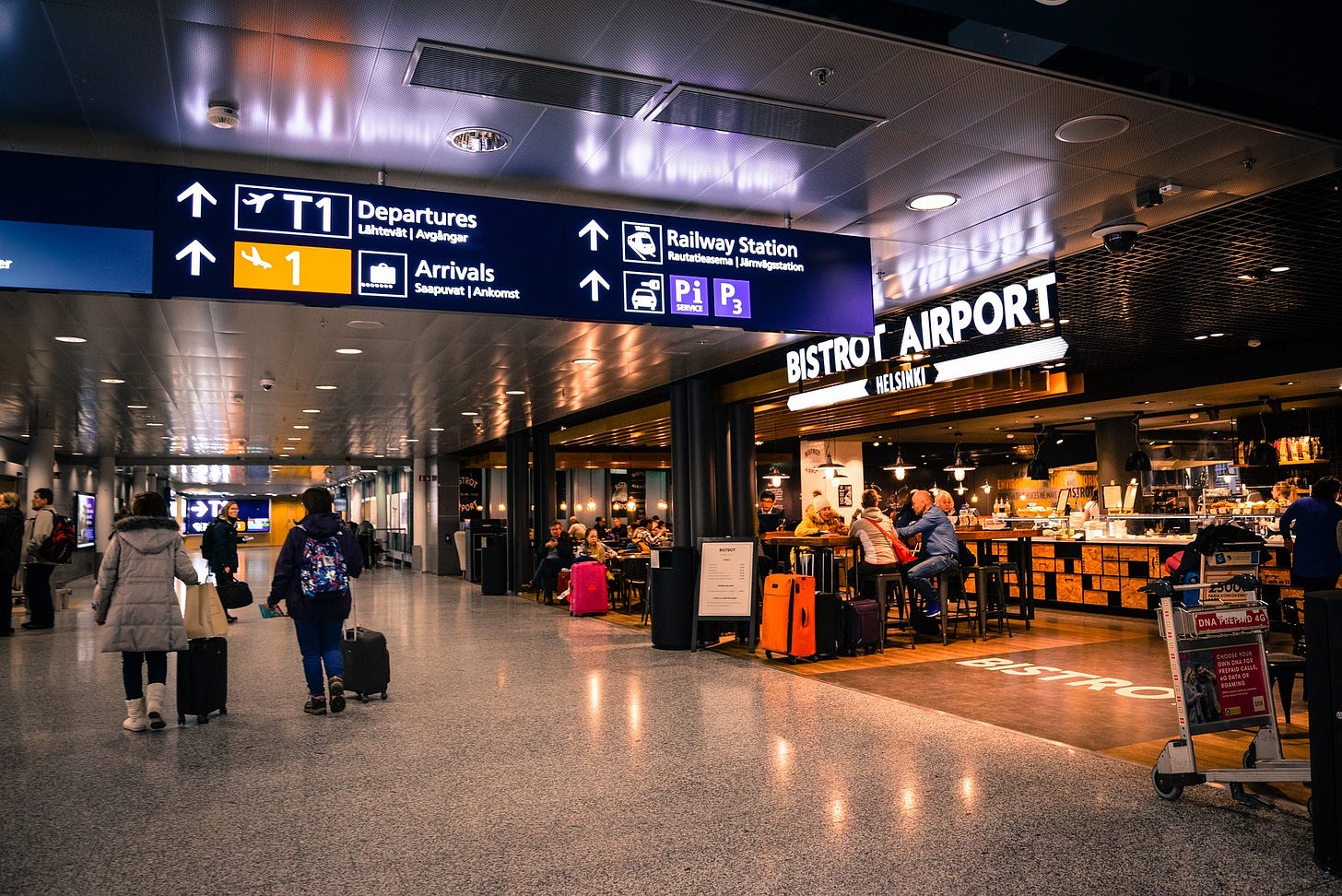Planning a Better Train Station
Many commuter train, subway, and light rail stations are little more than open-air (or underground) platforms that almost punish riders for waiting there. What would a different approach look like?

Most train stations, whether elevated, underground, or street-level platforms, are designed to be transient spots where crowds can quickly pay their fare, board their train, and then exit. As a result, these stations are inadequately prepared to host the many riders who spend significant time waiting for their trains and endure various combinations of extreme weather, poor nighttime lighting, and a lack of basic conveniences like seating or restrooms. Previously, I argued these negative experiences sabotaged transit networks’ goal of increasing ridership and that planners should rethink stations to create a more comfortable and dignified environment. This week, I will explain how an improved train station – a Better Train Station – can be planned to provide that experience.
Regardless of whether it’s elevated, street-level, or underground, a Better Train Station has five features:
Fully-enclosed, insulated, well-lit waiting areas
Ample seating and tables
Bathrooms
Consistent maintenance, cleaning, and staffing
Retail, with at least one mandated 24-hour operator
Each feature is essential to providing an experience that not only provides riders the comfort and dignity lacking in current train stations, but also deviates noticeably from assumptions about the design (and limitations) of train stations.
Of note: Americans with Disabilities Act compliance is required by law, but stations should always follow the spirit of the law (accessibility as a priority) rather than opting for minimal, letter-of-the-law compliance.
Where above-ground stations expose waiting riders to the elements, either through a lack of shelter or an absence of insulated shelter, the Better Train Station provides an insulated, enclosed waiting area for riders upon entry. Although train platforms themselves will remain outdoors, they will no longer be the only space for people to wait, serving instead as transitory spaces for boarding. In addition, the Better Train Station’s well-lit, enclosed space provides a dramatically different experience of late-night transit when compared to poorly lit stations, particularly those located on the street.
Benches and tables provide ample seating and a place to eat, work, and socialize, allowing people to rest and use their time more productively and more conveniently. Restrooms are a self-explanatory essential present in transit networks around the world (Vienna), as is consistent maintenance and cleaning: no one wants to frequent or utilize broken and grimy spaces. The Better Train Station is also unique because of its human touch – the same cleaning crew comes through weekly. The station’s transportation representatives are assigned to the area that includes the station. Even if they’re at a nearby station that day or week, representatives will be back to welcome riders and help them plan their trip (assuming systems emulate Los Angeles Metro’s highly successful Transit Ambassadors program).
As both a space and a functioning entity, the Better Train Station is brought together by its retail spaces. The busiest stations resemble miniature malls, with storefronts in front of the fare gates and behind in the waiting area. At the smallest stations, a 24/7 storefront – of which each station is required to have one – faces the waiting area. Storefronts fund the maintenance and cleaning of the stations they inhabit, while the 24/7 storefronts provide a social atmosphere that ensures single riders are not alone late at night. On top of these benefits, storefronts provide goods and services to riders, making the Better Train Station a destination in of itself that also increases ridership and station foot traffic.
The Better Train Station likely sounds familiar – it sounds like an airport, or one of the flagship train or transit stations remaining in the United States (Los Angeles’ Union Station, New York City’s Grand Central). That is by design – these are places that have invested in making the experience of waiting comfortable. The Better Train Station is a statement that comfort and dignity should not be reserved for the highest-profile stations (or for air travel) and that investment is necessary to coax people out of cars and onto American cities’ growing rail networks.
Many people have low expectations for train stations, and thus, low expectations for their experience traveling by rail. Those expectations, among longtime riders and skeptical drivers alike, will not change unless the transit agencies reinvent the station and the experience of waiting. The Better Train Station is a model for that reinvention and a future where waiting for a train is seen as equally, if not more comfortable than waiting in one’s own car in traffic.



